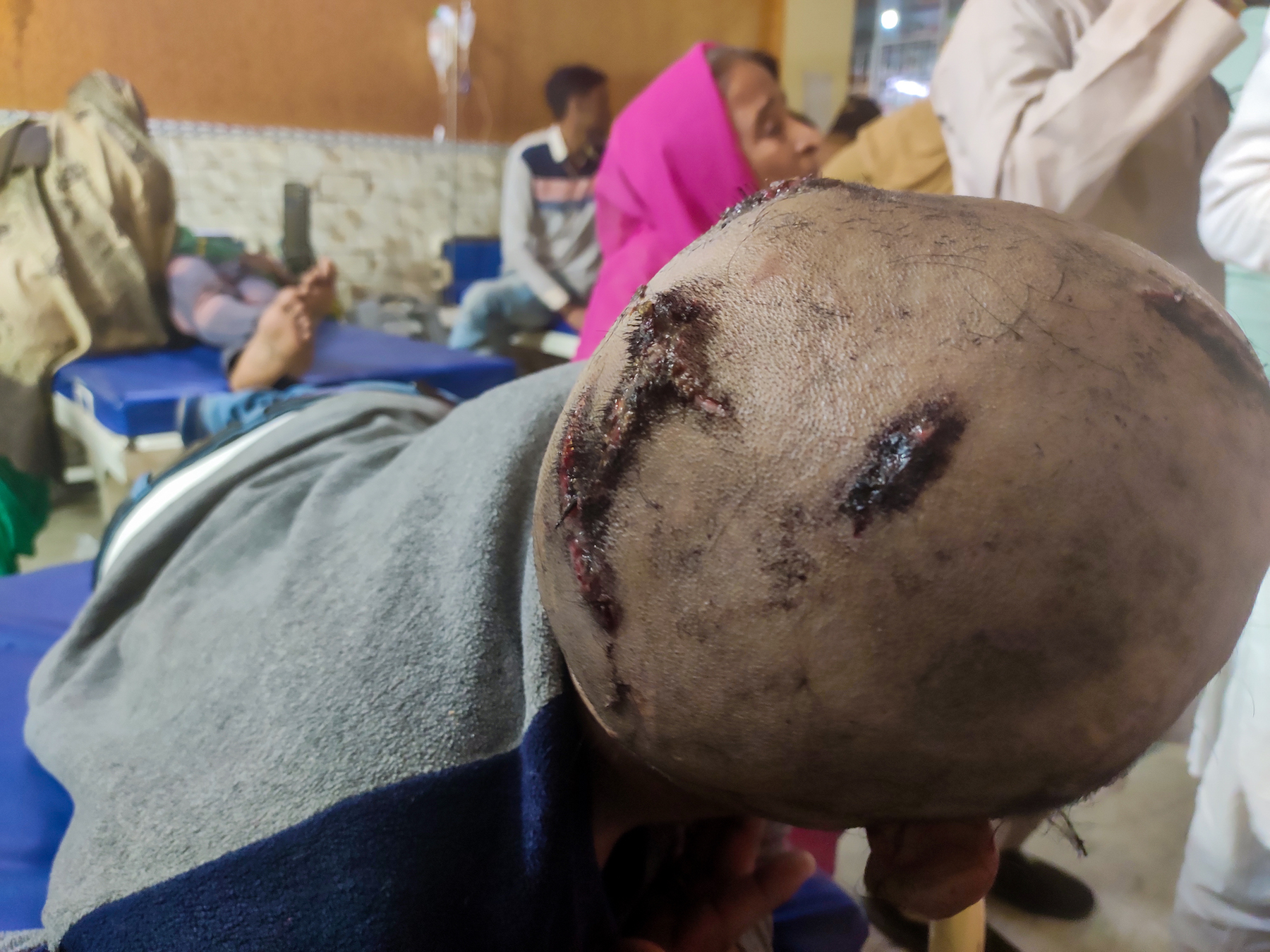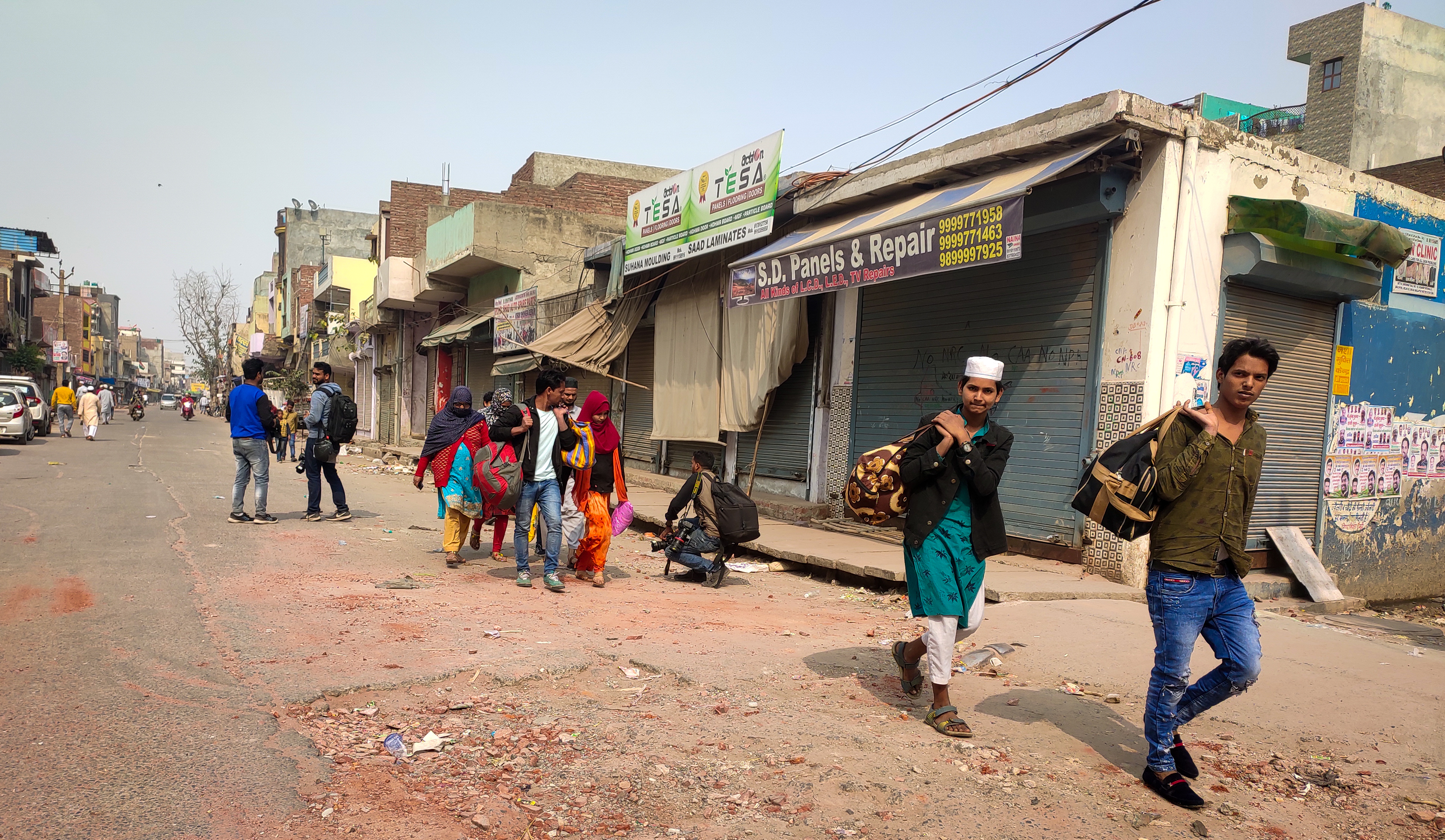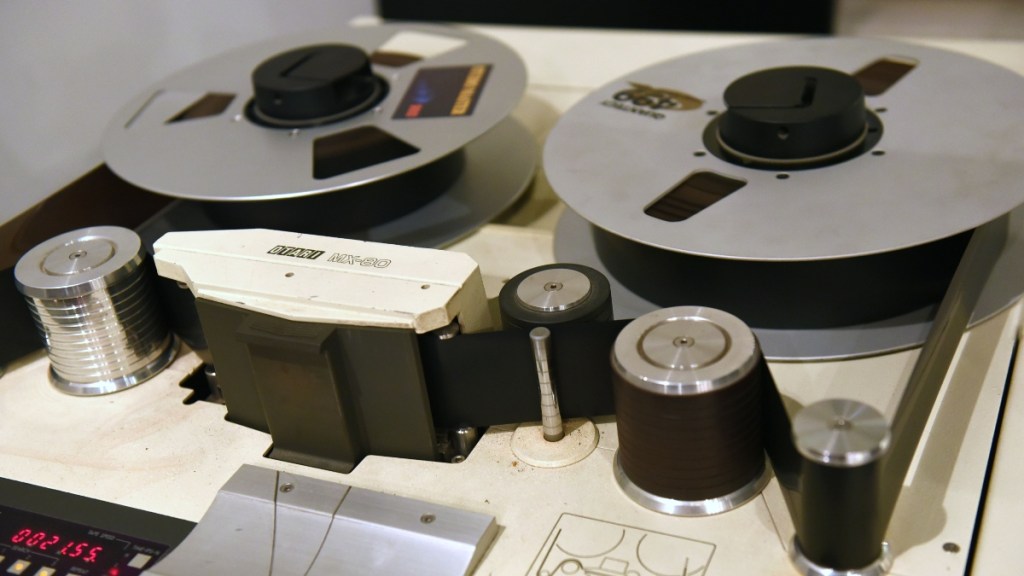DELHI — Imran Khan was walking home from selling cloth on the streets of New Delhi when a mob of men stopped him and asked his name. As soon as he said Imran — an identifiably Muslim name — more than a dozen men began pummelling him with iron rods, hammers, and batons.
Two hours later, Khan awoke in a garbage-filled canal close to his mostly Hindu neighborhood of Shiv Vihar.
Videos by VICE
“They tied a rope around my neck and thought I was dead. Then I was thrown into the canal,” Khan told VICE News three days later from a hospital bed.
The 30-year-old father of two was less than half a mile from his home, and he stumbled there in the dark, covering his bleeding head with both hands. His wife and mother had been waiting, terrified, with his 5-year-old daughter and infant son. From their house they could hear a mob chanting Jai Shri Ram — Hail Lord Ram.
The right-wing Hindu pogroms against Muslims erupted in India’s capital city of New Delhi on February 23, after months of tension and protests over two anti-Muslim policies supported by the national government. India has a long history of tension between Muslims and Hindus, and flashes of anti-Muslim violence, but Islamophobia has been stoked by the Hindu nationalist government of Prime Minister Narendra Modi.

The attacks in Delhi started after a member of the ruling Bhartiya Janta Party (BJP) told police to clear protest sites in an area of northeast Delhi. Thousands of Muslims, mostly women, had been protesting the Citizenship Amendment Act and the National Register of Citizens. The first gives citizenship to non-Muslims from Afghanistan, Bangladesh, and Pakistan. The second, which is in use in the state of Assam and may soon go national, requires all Indians to prove their citizenship. Muslims have been disproportionately stripped of their citizenship rights through the program in Assam.
READ: Inside India’s sham tribunals that could strip millions of citizenship.
Just an hour after police were instructed to clear out the protesters, Hindu mobs took over the streets, including in Shiv Vihar. Over the next four days, they covered their faces with masks and wore helmets as they beat people to death and burnt houses, shops, schools, mosques. Some Muslims fought back.
Over four days, at least 52 people, including several Hindus, were killed, and more than 350 people injured.
Khan was attacked on February 24. He made it home to his family, but they couldn’t get him to a hospital; mobs were still roaming the streets of the neighborhood, threatening people and burning houses.
“We were stuck for two days – there was nobody to treat my wounds. My mother put cloth on my head.” They ran out of food and milk, so they moistened chapati, an Indian flatbread, with water to feed the children.

“We were so scared that they would have killed us if they had known we were inside. I forced my child not to cry by keeping him on a cloth, to swing him, play with him,” Khan said.
When they finally emerged, they saw the damage to their neighborhood. “They burnt everything — we could hear the blasts of gas cylinders,” Khan said.
Khan’s family brought him to Al Hind hospital on February 27. He was diagnosed with a concussion and skull fractures, and had deep cuts on his head and body.
The private hospital didn’t charge patients affected during the crisis, but Khan has no idea how much it will cost him to fully recover. He and his family are afraid to go home to even retrieve their belongings, and Khan won’t be able to work for the foreseeable future.
READ: Hindu nationalist mobs are beating and killing Muslims.
He’s still at Al Hind almost a week after the attack, sharing a bed with an injured young man. This tiny hospital, which has 15 beds and three doctors, became the only destination for the injured from all the riot-hit areas.
Dr. M. Ahtesham Anwar, who started Al Hind two years ago as a walk-in medical clinic, said more than 600 people came to the hospital with injuries in four days. Two people were dead, one shot, and another stabbed by knives.
“It was so crowded here. Body parts were lying around; some people’s hands or fingers were severed from the body. There was blood everywhere; my own clothes were drenched in blood,” Dr. Anwar said.

There were so many people that they lay scattered in an upstairs hallway, he said. The staff didn’t have enough IV stands, so they tied a rope between pillars and hung bags of fluids from it to administer to patients.
“We had no expectation that such a carnage would happen here; we live in the capital city,” Dr. Anwar said.
On Friday a doctor said Khan’s wounds weren’t healing, and he needed to be transferred to a hospital with more facilities.
“They shot three bullets at him; then they threw him inside the fire.”
Dr. Anwar said many of those who came to Al Hind were seriously injured and in need of care at a better-equipped hospital. But the government’s response had made that impossible for days, which he said ultimately led to worse injuries and even potentially avoidable deaths.
On February 25, two days after the attacks started, the hospital was overwhelmed. But police were guarding the exit and entry points of the neighbourhoods, blocking ambulances from getting in. Dr. Anwar called everyone he knew in the health department, but he got no help.
“Ambulance was not allowed – we tried every possible way,” Dr. Anwar said. “Drivers told us that the police stopped ambulances at barricades. When I sent a few injured by foot with paramedics to get into an ambulance, standing on main road, they called me saying, ‘Police are not letting us cross barricade.’ They made injured people wait for over 45 minutes.”

At 9:30 that night, his hospital joined the chorus on social media demanding the government act.
About four hours later, a local court issued an emergency order directing the police “to ensure the safe passage of the injured victims to the nearest available government hospitals.”
Local doctors, paramedics, and medical-supply store owners also went to Al Hind to volunteer. Two days into the attacks Al Hind hospital had 15 doctors serving the injured, and medicine was brought from drugstores in the area.
The violence finally ended on the 27th. Days after their relatives were killed, at least a dozen families were still waiting outside the mortuary of the 2,500-bed Guru Tegh Bahadur hospital, which is five miles away from Al Hind.
“They are terrorized. When such a tragedy happens, you lose faith in humanity.”
The family of 58-year-old Anwar Qassar, who was killed in the riot in Shiv Vihar, was one of them. Qassar’s daughter, Gulshan, 27, her husband, who is blind, and his brother Saleem, cried and consoled each other outside the mortuary doors.
“The mob gathered outside and dragged my brother out. Then they destroyed everything in his house, making a big fire in the street out of his things.”
Then, Saleem said, they killed Anwar. He saw it happen from a Hindu neighbor’s home where he and his family were hiding. “They shot three bullets at him; then they threw him inside the fire. They burned my house down, too. I was watching everything through a window but couldn’t do anything.”
“We only found my brother’s foot,” Saleem said. “We are waiting here to take that as his body.”
Late at night, Saleem’s neighbor helped him escape by putting a vermilion stripe on his forehead and wrapping a saffron-colored cloth — which is mainly used by Hindu nationalists — around his neck. “We walked fast until we reached the Muslim-dominated area,” Saleem said.
Dr. Anwar said that while some of the injured will recover, every patient and family he saw was traumatized.
“These wounds are not healed quickly.” Anwar said Muslims are now afraid when they see any indication of Hindu nationalism — uniforms, slogans like Jai Shri Ram, even the vermillion stripe many Hindus wear on their foreheads.
“They are terrorized. When such a tragedy happens, you lose faith in humanity.”
Cover: Gulshan Qassar, 27, and her husband sob outside the mortuary of Guru Tegh Bahadur hospital on February 28. Photo: by Fahad Shah/VICE News.
More
From VICE
-

LONDON, UNITED KINGDOM – SEPTEMBER 9: Gene Simmons, Ace Frehley and Paul Stanley of American glam metal band Kiss perform on stage at Wembley Arena on their 'Unmasked' concert tour, on September 9th 1980 in London, England. (Photo by Pete Still/Redferns) -

By: Kevin Estrada/Shutterstock -

Lori Van Buren/Albany Times Union via Getty Images

